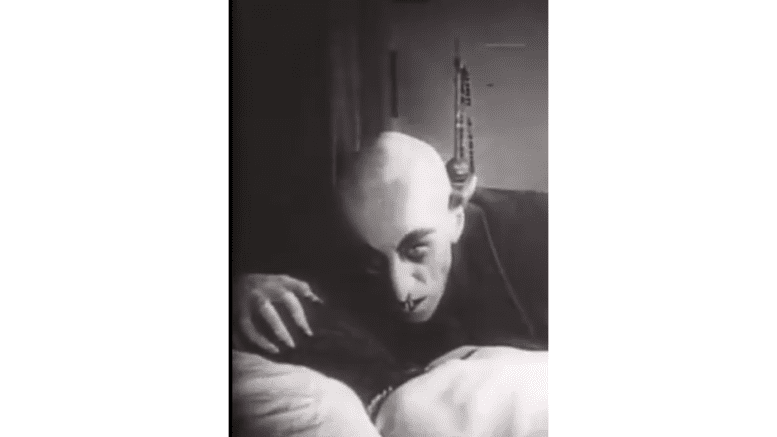Stanley Stepanic, University of Virginia [This article first appeared in The Conversation, republished with permission]
If you’re an active social media user, perhaps you’ve noticed a surge in posts recently about paprika, reflective shaving glasses and castle hospitality in Transylvania. One hundred twenty-five years after its initial publication, Bram Stoker’s “Dracula” is having a resurgence.
The current popularity bump is thanks to an email newsletter called “Dracula Daily.” The original 1897 version of “Dracula” was told in epistolary format, meaning the novel’s plot is presented through journal entries, letters, newspaper articles and the like. Matt Kirkland hit on a simple idea: Release the novel “Dracula” by entry, by date. Subscribers to his Substack newsletter receive messages in their inboxes day by day as the vampire tale unfolds in real time. If there’s no action on that date, there’s no message sent.
“Dracula Daily” has become the coolest book club on the internet, taking Tumblr, especially, by storm. As a Dracula and vampire scholar, I’m not surprised to see a new example of the story’s persistence and its tendency to find new life with modern audiences. Considered by many to be a classic of horror literature, Stoker’s “Dracula” is frequently referenced, discussed and adapted. What makes the phenomenon of “Dracula Daily” so interesting, though, is not just how it is finding a new audience, but the way the material is being consumed by these fans.
Following the action in real time
Stoker’s “Dracula” is not unique in using an epistolary style; it’s not even the first work of vampire fiction to do so. But by including the new technologies of his time – such as the phonograph and the typewriter – Stoker gave his tale a modern feel, much as if it were written today using Reddit entries composed on a smartphone.
The novel starts on May 3, with Jonathan Harker, a young English solicitor, describing his travels to visit a mysterious client in Transylvania. “Dracula Daily” readers received this particular entry on the same date, with a flippant summary stating “Meet Jonathan Harker, on a fun road trip for work, as he collects some new recipes.” With that intro, the opening Stoker wrote in the 19th century to set the scene comes off like a naïve travel blog to 21st-century readers scrolling on their phones.
The only difference between the original novel and the emailed content is that Kirkland opts to release the material in chronological order. For instance, Jonathan Harker witnesses Count Dracula scaling the wall of his castle in “lizard fashion” for the third and final time on June 29. His fiancee, Mina Murray, writes a letter to her friend Lucy Westenra on May 9. In the novel, the description of Dracula’s uncanny exit is presented before Lucy’s chatty letter. In “Dracula Daily,” it’s the reverse. Subsequent sections are published in the same way.
Newsletter subscribers are thus consuming the novel not just in a different format, but in a different order. While faithful to the original text, “Dracula Daily” is, in a sense, a partial retelling of the book.
Protectively mocking ‘my buddy Harker’
Upon initial publication, “Dracula” was dismissed by some influential critics. One comment was that “the early part goes best.” And it’s these first entries that have grabbed the “Dracula Daily” audience’s attention in 2022. They follow Jonathan Harker’s journey to meet Count Dracula to assist with his purchasing of properties in England. It hardly sounds like the sinister scheming of a centuries-old undead vampire lord. To audiences in 1897, the novel was quite similar to previous vampire literature, and such details were largely overlooked as par for the course.
But today’s audience meets Harker’s descriptions with more critical scrutiny. Readers laugh as Harker marches past what are obviously red flags. When locals stare at him and talk among themselves of Satan, hell, werewolves and vampires after hearing his travel plans, Harker simply adds a parenthetical note to himself: “(Mem., I must ask the Count about these superstitions).” For Harker, who does not believe in vampires, this would hardly seem a nonsensical idea.
Modern readers, even if tackling Stoker’s writing for the first time, however, are well aware that Count Dracula is a bloodthirsty vampire who has much more than British real estate on his mind. Trained by social media to mockingly scrutinize online content, “Dracula Daily” readers revel in minor details that are easily mocked. For instance, the fact that Dracula, maintaining the pretense that there are servants in this remote vampire’s lair, secretly makes Jonathan Harker’s bed himself, is viewed in a new and humorous light. “I appreciate Dracula’s efforts in running a one man hotel,” commented Tumblr user ashtry.
In Stoker’s time, one critic called the book’s descriptions “probably quite uncanny enough to please those for whom they are designed” – meaning, essentially, trash written for trash. Tumblr audiences in particular seem to have picked up on this quality, approaching the material with plenty of snark. It’s the mocking analysis of the novel by modern readers that sent “Dracula Daily” trending.
Consuming the story as a social experience
Readers always interpret a book’s style and meaning through the lens of their own knowledge and experiences. But the majority of previous “Dracula” interpretation I’ve seen has been at the hands of scholars and devoted fans. The social media response to “Dracula Daily” is different, with a primarily younger audience riffing on the novel in a new way.
As audiences analyze the novel piece by piece, they are engaging one another with memes and artistic interpretations of the plot as it unfolds. For instance, Harker’s description of Dracula climbing down the walls of his castle in “lizard fashion” has elicited visual art of fashion looks inspired by lizards.
Because “Dracula Daily” reveals the plot day by day, readers follow the story together and are all at the same place in the narrative at the same time. As in the heyday of radio or network series television, the audience can gather around the (now virtual) water cooler to discuss the latest revelation and speculate about what’s to come. Anyone could easily read ahead in the novel. But people are waiting with bated breath for the next installment to hit their inboxes.
It’s like a chapter-by-chapter book club. The forced slow pace leaves plenty of time for the ecosystem of memes and posts to flourish as the delicious dread builds about just what Dracula will do. As the plot further unfolds, I look forward to continuing to be entertained by the “Dracula Daily” audience – at least until Nov. 6, when the story will draw to a close for this year.
Stanley Stepanic, Assistant Professor of Slavic Languages and Literatures, University of Virginia
This article is republished from The Conversation under a Creative Commons license. Read the original article.





